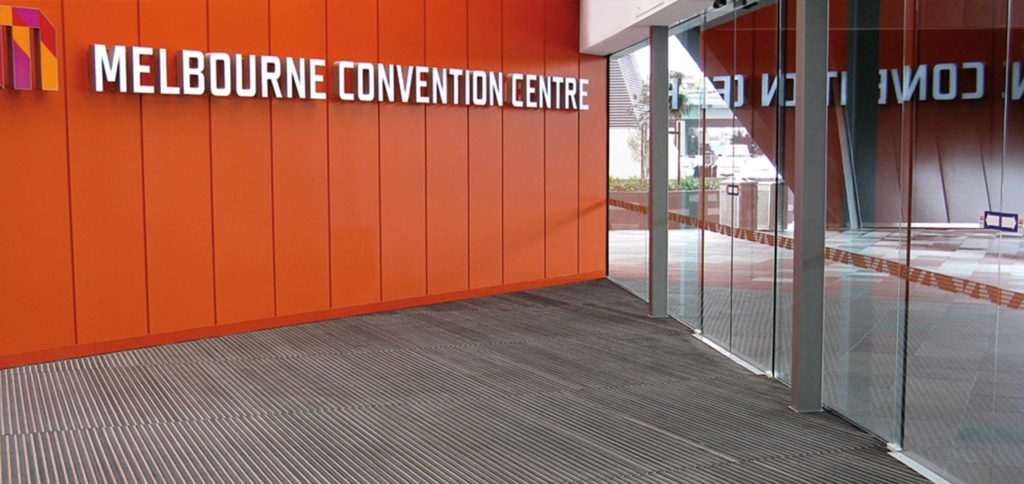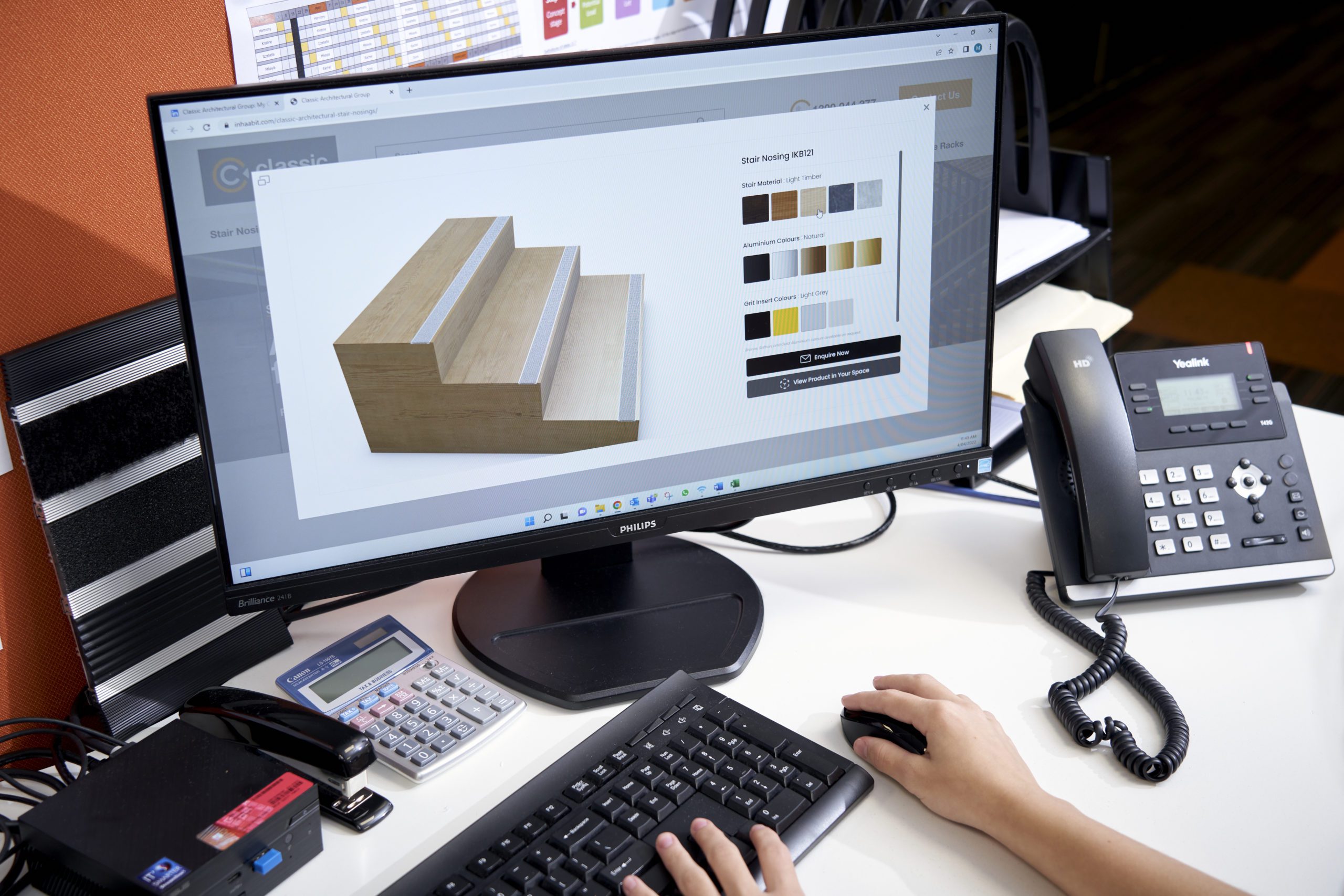Don’t leave floor safety considerations until the final fitout stage
Often left until the final fitout stages, factoring in floor safety during the early development phases can save you from costly mishaps occurring down the track. Slips, trips and falls result in thousands of preventable injuries every year, ranging in severity from musculoskeletal injuries to fractures and dislocations.
Some of the most common incidents involving pedestrians occur at the following public locations: entrances, walkways, stairways, escalators and ramps. While safety risks can’t be eliminated entirely due to circumstantial factors, preventative control measures can be put in place to minimise occurrences.
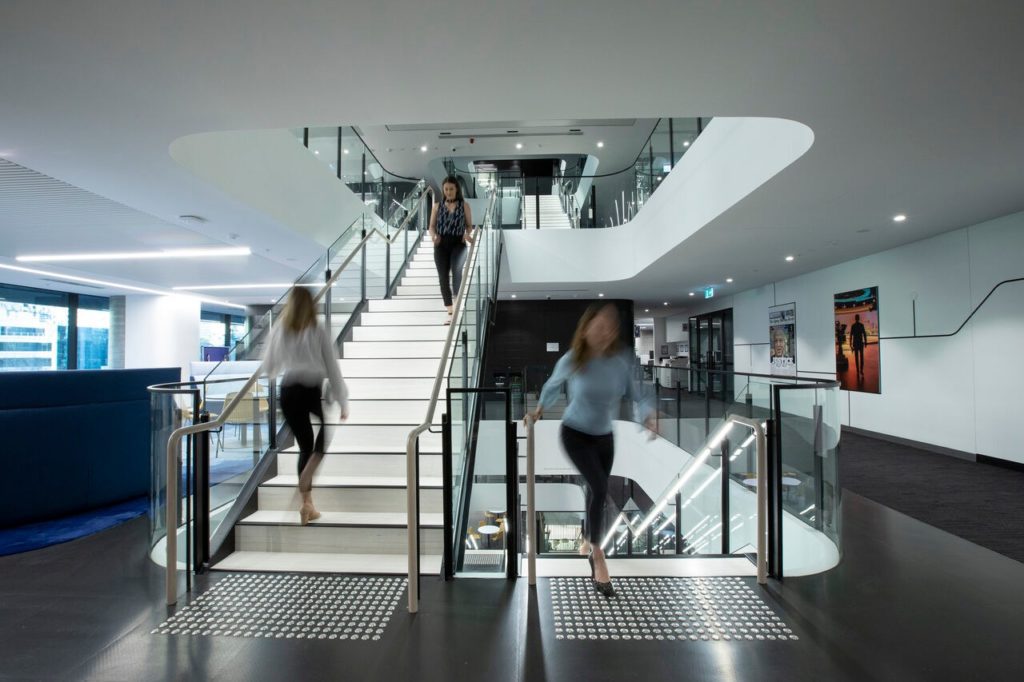
When choosing your flooring material and design, you should consider:
- Expected users and use conditions
- Level of traffic to predict standard wear
- Slip resistance when both wet and dry
- Changes between floor heights and surface materials
- Cleaning requirements to ensure continual maintenance and upkeep
Getting you on the front foot with helpful tips & advice for your next project
Whether it’s refurbishing an existing space or fitting out a brand-new development, prevention of slips, trips and falls starts with good design. From design to installation and maintenance, Classic Architectural Group is committed to seeing your project the whole way through. Specialising in public access and safety systems, you can lean on our 40+ years of experience to get a step ahead.
Tailored to your specific project needs, here’s how we can help.
Determining the right type of tactile indicators
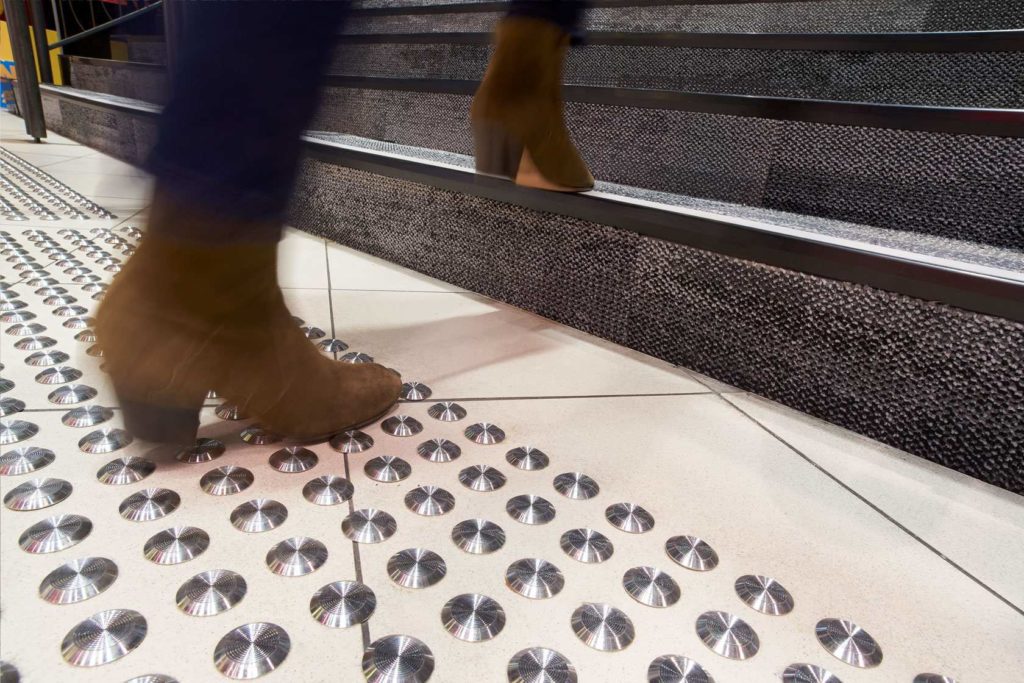
Tactile ground indicators are a crucial floor safety requirement, particularly for the visually impaired. Warning tactiles alert people to the presence of potential hazards. Directional tactiles assist with orientation guidance for a continuous path of travel.
Empowering both visually impaired pedestrians and everyday users alike, our team can advise you on selecting the right type of tactile indicators for your project. From correct placement to selecting the right size and quality, we’ll also provide clarity on the following factors:
- Aesthetic and functional requirements
- Interior vs. exterior applications
- Required slip-resistant rating
- LRV rating and Luminance Contrast Testing
- Full Australian Standards compliance
Choosing the best stair nosings
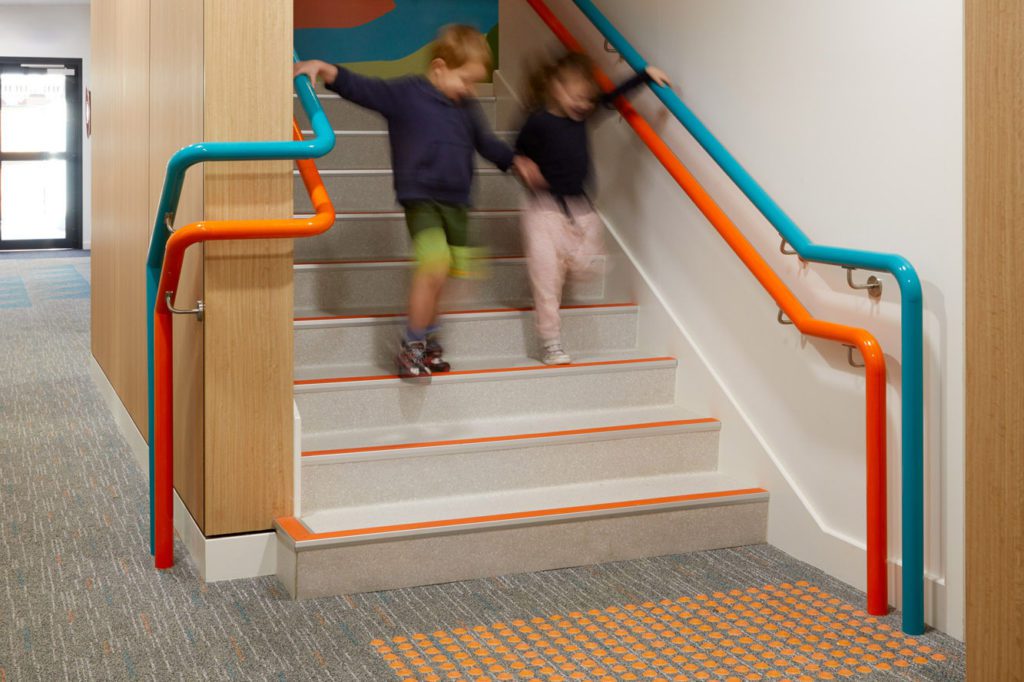
A profiled strip of material, commonly aluminium, stair nosings are fitted to the edge of steps to provide an anti-slip surface. This is a mandatory requirement, according to AS1428.1, and prolongs the wear of both the stair tread and the floor covering used on the stairs.
When choosing stair nosings for your project, we’ll also guide you with the following considerations:
- Design and aesthetics – including bespoke solutions
- Predicted level of pedestrian traffic (e.g. low, medium, high) and the type of traffic (e.g. adult, child, visually impaired, etc.)
- Application type – For example, surface mounted vs. rebated, and type of installation surface (e.g. concrete, carpet, vinyl, rubber, timber, tile, etc.)
- Location and environment of the stairwell
- Required LRV rating for complete compliance with building standards
Selecting high-quality commercial entrance matting
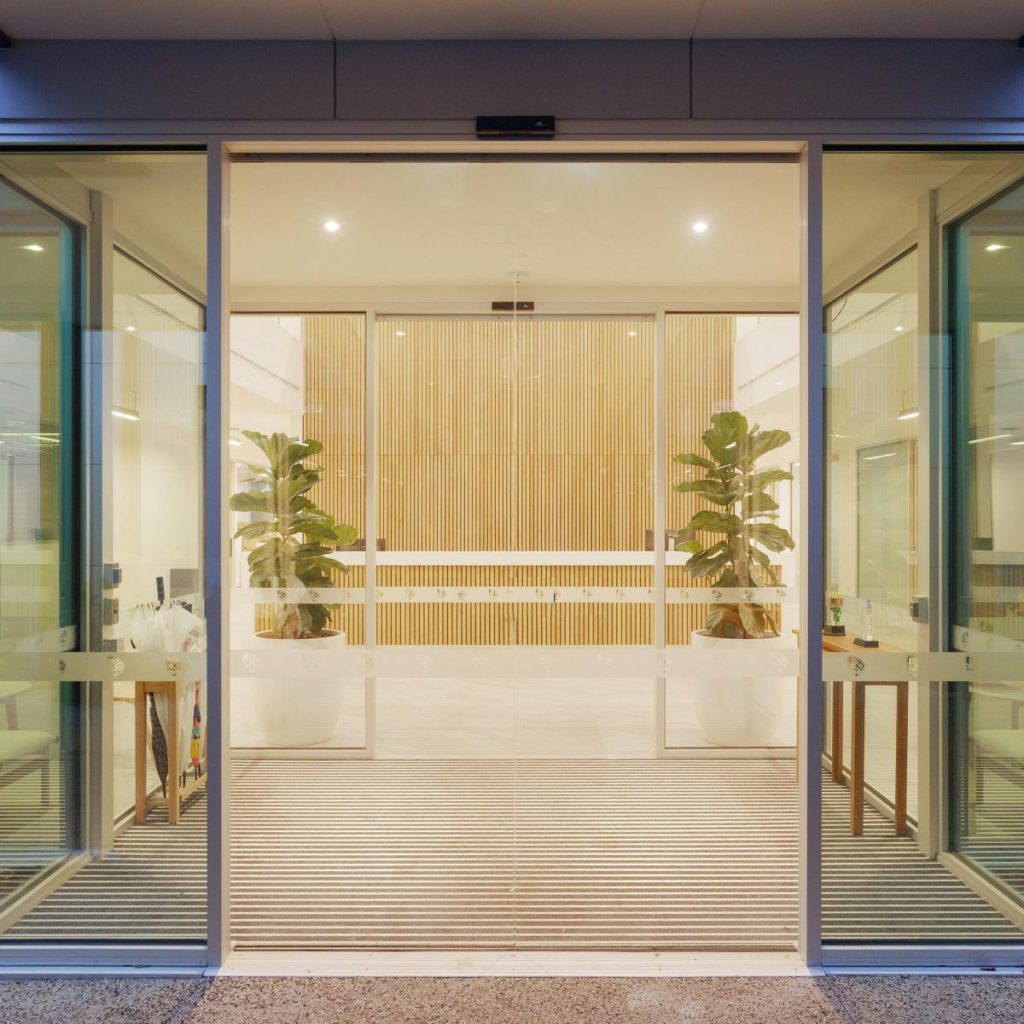
One of the first design elements that visitors will see when entering your facilities, commercial entrance mats are essential for trapping moisture, debris and other pollutants at the door. This minimises the presence of potential trip hazards as well as maintaining the cleanliness of your premises.
While there is a wide variety to choose from, Classic will help you choose the best commercial entrance matting for your project based on considerations such as:
- Estimated level of expected pedestrian traffic
- Size and depth of matting required for effective cleaning
- Type of matting required – aluminium roll-up matting, modular tiles, carpet style matting, scraper matting
- Identifying the most common walking routes within your building
- Varying entrance zones – internal, external and other circulation areas
- Aesthetic requirements
- Desired lifespan
100% Compliance with Australian Safety Standards
Alongside architecturally-driven designs and fast product/installation lead times to support your vision, our team will also ensure that your project is fully compliant with the Australian Safety Standards. This includes Australian Standards (AS 1428.1:2009 and AS1428.4.1:2009), The National Construction Code/Building Code of Australia and The Disability Discrimination Act (DDA).
Talk to Classic about prioritising your floor safety requirements today.
Don’t leave it till the last minute – Talk to Classic about how we can help you choose the best floor safety solutions during the early stages of your project. This not only keeps you on track with budgets and scheduled completion dates but also gives you more flexibility around customised designs to complement your project’s architectural goals. Take a look at some of the projects we’ve worked on.
To discuss your floor safety requirements or for more information, please contact our friendly team by calling 1300 244 377 today.
